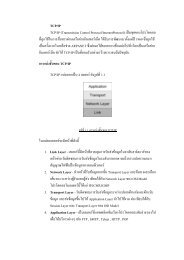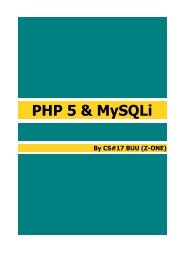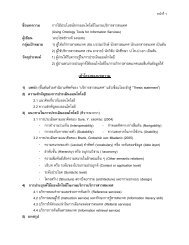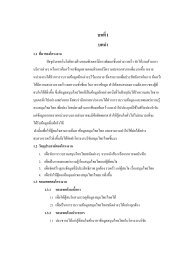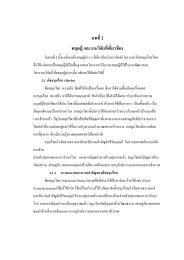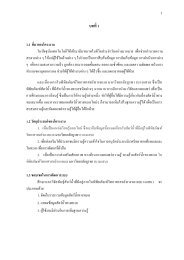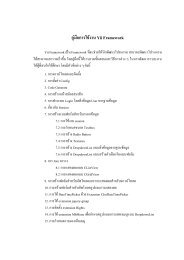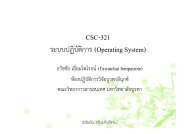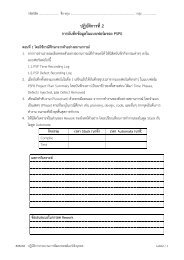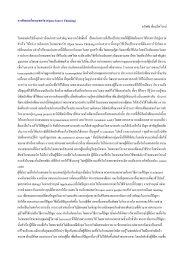INTRODUCTION TO STATISTICAL MODELLING IN R
INTRODUCTION TO STATISTICAL MODELLING IN R
INTRODUCTION TO STATISTICAL MODELLING IN R
You also want an ePaper? Increase the reach of your titles
YUMPU automatically turns print PDFs into web optimized ePapers that Google loves.
P.M.E.Altham, University of Cambridge 39# subset=(nfail!=0).# ‘!=’ means ‘not equal to’ and is the negation of ‘==’?"&" # for full information on the logical symbolsDo you have any comments on the design of this experiment?The data (read this by read.table(“...”,header=T)) follow.nfail temp2 531 571 581 630 660 670 670 670 680 690 700 701 701 700 720 730 752 750 760 760 780 790 81first.glm = glm(pfail~ temp, binomial, weights=six)fv = first.glm$fitted.valuesplot(temp, fv, type="l", xlim=c(30,85), ylim=c(0,1), xlab="temperature",ylab="probability of failure")points(temp, pfail)title("The space shuttle failure data, with the fitted curve")The corresponding logistic graph is shown in Figure 8.1. I took the temperaturevalues from 30 degrees to 85 degrees (the x-axis) to emphasize the fact that we haveno data in the range 30 degrees to 50 degrees.Note added June 2012.A very interesting use of a complex logistic regression on a large dataset is given byWesthoff, Koepsell and Littell, Brit Med Journal, 2012, ‘Effects of experience and



